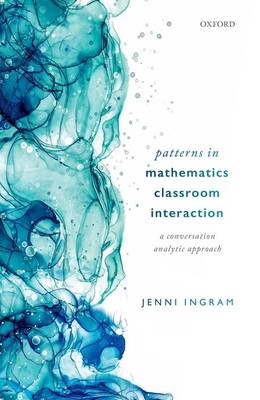
- Afhalen na 1 uur in een winkel met voorraad
- Gratis thuislevering in België vanaf € 30
- Ruim aanbod met 7 miljoen producten
- Afhalen na 1 uur in een winkel met voorraad
- Gratis thuislevering in België vanaf € 30
- Ruim aanbod met 7 miljoen producten
Zoeken
Patterns in Mathematics Classroom Interaction
A Conversation Analytic Approach
Jenni Ingram
Hardcover | Engels
€ 157,95
+ 315 punten
Omschrijving
Classroom interaction has a significant influence on teaching and learning. It is through interaction that we solve problems, build ideas, make connections and develop our understanding. Patterns in Mathematics Classroom Interaction describes, exemplifies and considers the implications of patterns and structures of mathematics classroom interaction. Drawing on a Conversation Analytic approach, the book examines how the structures of interactions between teachers and students influence, enable, and constrain the mathematics that students are experiencing and learning in school. In particular, it considers the handling of difficulties or errors and the consequences on both the mathematics students are learning, and the learning of this mathematics. The various roles of silence and the treatment of knowledge and understanding within everyday classroom interactions also reveal the nature of mathematics as it is taught in different classrooms. Examples of students explaining, reasoning and justifying as they interact are also drawn upon to examine how the structures of classroom interaction support students to develop these discursive practices. The approach taken in Patterns in Mathematics Classroom Interaction enables the identification of not only what structures exist and pervade classroom discourse, but also how these structures influence teaching and learning. It is the understanding of how these structures affect students' experiences in the classroom that permits the use and development of practices that can support students' learning. This reflexive relationship between these structures of interactions and student actions and learning is central to the issues explored in this book, alongside the implications these may have for teachers' practice, and students' learning.
Specificaties
Betrokkenen
- Auteur(s):
- Uitgeverij:
Inhoud
- Aantal bladzijden:
- 176
- Taal:
- Engels
Eigenschappen
- Productcode (EAN):
- 9780198869313
- Verschijningsdatum:
- 1/05/2021
- Uitvoering:
- Hardcover
- Formaat:
- Genaaid
- Afmetingen:
- 155 mm x 234 mm
- Gewicht:
- 544 g

Alleen bij Standaard Boekhandel
+ 315 punten op je klantenkaart van Standaard Boekhandel
Beoordelingen
We publiceren alleen reviews die voldoen aan de voorwaarden voor reviews. Bekijk onze voorwaarden voor reviews.











